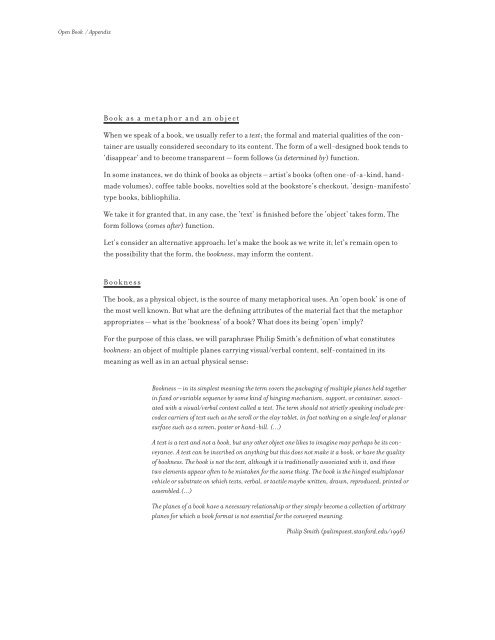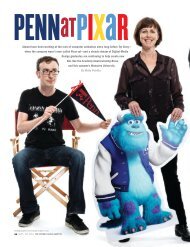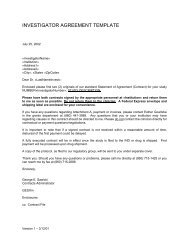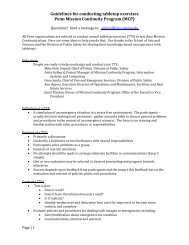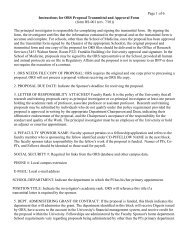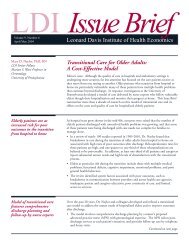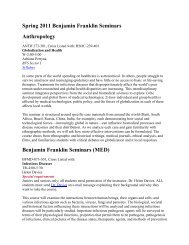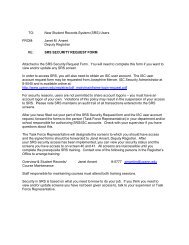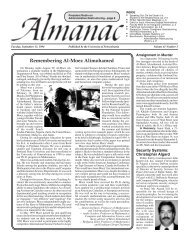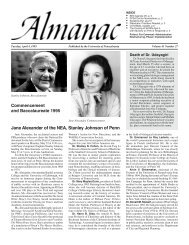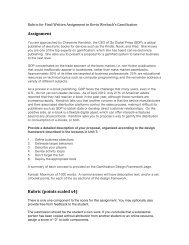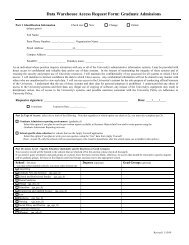Benjamin Franklin Scholars Seminar fnar 238/538 â401 ...
Benjamin Franklin Scholars Seminar fnar 238/538 â401 ...
Benjamin Franklin Scholars Seminar fnar 238/538 â401 ...
You also want an ePaper? Increase the reach of your titles
YUMPU automatically turns print PDFs into web optimized ePapers that Google loves.
Open Book / Appendix<br />
Book as a metaphor and an object<br />
When we speak of a book, we usually refer to a text; the formal and material qualities of the container<br />
are usually considered secondary to its content. The form of a well-designed book tends to<br />
‘disappear’ and to become transparent — form follows (is determined by) function.<br />
In some instances, we do think of books as objects – artist’s books (often one-of-a-kind, handmade<br />
volumes), coffee table books, novelties sold at the bookstore’s checkout, ‘design-manifesto’<br />
type books, bibliophilia.<br />
We take it for granted that, in any case, the ‘text’ is finished before the ‘object’ takes form. The<br />
form follows (comes after) function.<br />
Let’s consider an alternative approach: let’s make the book as we write it; let’s remain open to<br />
the possibility that the form, the bookness, may inform the content.<br />
Bookness<br />
The book, as a physical object, is the source of many metaphorical uses. An ‘open book’ is one of<br />
the most well known. But what are the defining attributes of the material fact that the metaphor<br />
appropriates — what is the ‘bookness’ of a book? What does its being ‘open’ imply?<br />
For the purpose of this class, we will paraphrase Philip Smith’s definition of what constitutes<br />
bookness: an object of multiple planes carrying visual/verbal content, self-contained in its<br />
meaning as well as in an actual physical sense:<br />
Bookness – in its simplest meaning the term covers the packaging of multiple planes held together<br />
in fixed or variable sequence by some kind of hinging mechanism, support, or container, associated<br />
with a visual/verbal content called a text. The term should not strictly speaking include precodex<br />
carriers of text such as the scroll or the clay tablet, in fact nothing on a single leaf or planar<br />
surface such as a screen, poster or hand-bill. (...)<br />
A text is a text and not a book, but any other object one likes to imagine may perhaps be its conveyance.<br />
A text can be inscribed on anything but this does not make it a book, or have the quality<br />
of bookness. The book is not the text, although it is traditionally associated with it, and these<br />
two elements appear often to be mistaken for the same thing. The book is the hinged multiplanar<br />
vehicle or substrate on which texts, verbal, or tactile maybe written, drawn, reproduced, printed or<br />
assembled.(...)<br />
The planes of a book have a necessary relationship or they simply become a collection of arbitrary<br />
planes for which a book format is not essential for the conveyed meaning.<br />
Philip Smith (palimpsest.stanford.edu/1996)


